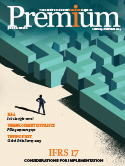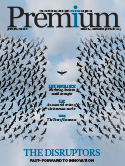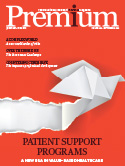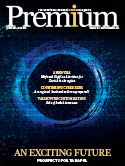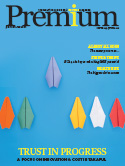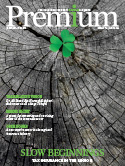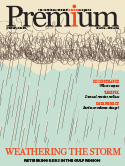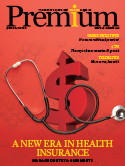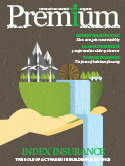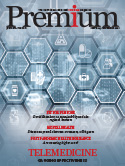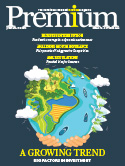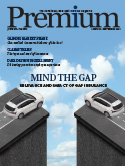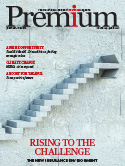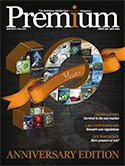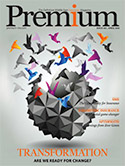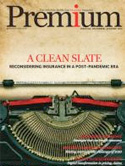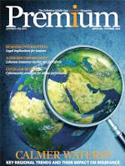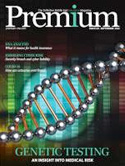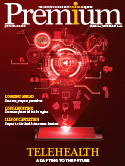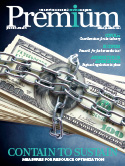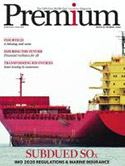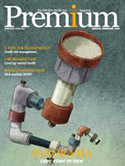The Concept of a Healthcare Trust

Can medical insurers in the Middle East offer new product structures to gain market share, asks Simon Isgar.
Health Insurance is by far the largest line of risk, alongside motor insurance in the Middle East. Both lines of insurance tend to be mandatory in several of the GCC countries, save that health insurance, in the United Arab Emirates, for example, is currently only mandatory in the Emirates of Abu Dhabi and Dubai. With this backdrop, it is important to address whether medical benefits and services can be facilitated through alternative structures to benefit consumers, control costs, create fair market competition, enhance new technologies and remove unnecessary barriers to access good quality healthcare.
Medical benefits trusts are frameworks for providing healthcare benefits and services to defined and collective groups, such as employees, professional associations, and other common collective bodies. They are often used by large employers as an alternative to medical insurance. Furthermore, it is possible for medical insurance providers to set up trust arrangements through collective associations and defined membership rules, which are insured/reinsured with a larger capacity provider under a master policy of insurance (see below).
Trusts for group medical benefits are not in their strict sense insurance. Collective group insurance sometimes creates an interesting potential conflict with traditional insurance, as there must always be an insurable interest under and pursuant to an insurance policy/contract as a matter of law. Sometime, defined groups and the risk arising therefrom may not be deemed an insurable-interests and therefore uninsurable. Associations and trust structures, therefore, resolve this issue to a large extent.
In this era of technological advancement, (Middle East) insurers should be looking at new distribution models and structures to cater for their savvy tech consumers. By way of illustration, several specialised private medical insurers offer wider and flexible structures for their policyholders through “Master Policy” arrangements, with membership associations or trust instruments, where these entities have legal personality and take the benefit of a Master insurance policy to insure their members as beneficiaries under the association/scheme rules. In practice, potential members will fill out an application form to join as members of the scheme and become part of the association or trust as members/beneficiaries respectively, which can include individuals, families, and group members. The association or trust is then insured through a Master policy of insurance with a carrier (whether insurer or reinsurer). The arrangements can cater for term life, healthcare benefits, travel, and other lines, such as income protection. Indeed, it can include other benefits, such as access to estate planning and investment. While these arrangements may not satisfy mandated medical insurance schemes, they can certainly fill the gaps as top-up cover for medical benefits that are not necessarily covered in your standard medical mandated insurance. In addition, the association or trust model provides a good starting point to use digital technology and reach a wider consumer basis, i.e., on demand benefits for example through digital platforms.
Medical benefits trusts are, for all intents and purposes, self-funded or self-insured programmes, which is generally prohibited under the current Health Insurance Laws of several Middle East countries when it comes to the mandated health insurance programmes. Notwithstanding, any medical benefits programmes outside the mandated schemes of, for example, Abu Dhabi and Dubai could be facilitated through a trust arrangement with the recent promulgation of Federal Decree-Law No. 19/2020 Regarding Trusts (“UAE Trusts Law”) or under the legal frameworks of the DIFC and ADGM, which provides for common law trusts. For example, several employee shares schemes have taken a trust model to facilitate the arrangement under the DIFC and ADGM legal frameworks.
It may be possible to set up employee benefit schemes under trust arrangements, including health and sickness benefits.
 UAE Trusts Law mirrors other legal frameworks, such as common law jurisdictions, incorporating the concepts of “settler, trustee and beneficiary”, although one major difference is that trusts under the UAE Trusts Law have a separate and distinct legal personality, unlike common law trusts.
UAE Trusts Law mirrors other legal frameworks, such as common law jurisdictions, incorporating the concepts of “settler, trustee and beneficiary”, although one major difference is that trusts under the UAE Trusts Law have a separate and distinct legal personality, unlike common law trusts.
Pursuant to UAE Trusts Law, a trust takes on the form of a legal vehicle through a trust instrument where defined property/assets are settled by a settlor and administered by trustees for a defined group of beneficiaries. These trusts can be general, special, or charitable. UAE Trusts Law sets out the rights and obligations of the different parties to a trust, including the settlor, beneficiary protector and trustees.
Under UAE Trusts Law and the DIFC and ADGM legal frameworks, the latter of which provides for common law trusts, it is possible for insurers, (possibly brokers and third-party claims administrators), UAE employers, associations, or other organisation with collective members to set up trust arrangements for medical benefits over and above the mandated medical insurance requirements. For example, larger employers may want to offer a wider employee benefits package to its staff, including benefits that are not standard with a standard medical insurance policy. This might include counselling from mental health services and well-being services.
Medical benefit trusts can save the employer money in the long-term avoiding paying out large premiums, which fund, to some extent the profit margins of insurers, while also taking control and management of the scheme, thereby mitigating unforeseen risks of over claiming benefits and provide a degree of cost control. There is also a degree of flexibility with medical benefit trusts as opposed to conventional medical insurance, where benefits can be changed, reduced, or added without additional underwriting.
A typical medical benefits trust would take the form of a non-discretionary trust, where the trust instrument and rules must confer an absolute right to the beneficiaries to receive payment for the medical benefit subject to the scheme rules. The assets (in this case the employer’s or members contributions) must be identifiable as a benefit to each of the employees or members. The trustees (in this case the employer) must not benefit from the trust assets and the contributions must be irrevocable. Generally, as a matter of law, the trust cannot be terminated or cancelled until all medical benefits have been settled, for which the contributions have been settled for those medical benefits.
But why would insurers and employers seek to set up these trust arrangements, what might be seen as expensive and unnecessary given the requirements for the local mandated medical schemes in the Middle East?

Simon Isgar, partner & head of Insurance, BSA Ahmed Bin Hezeem and Associates LLP
Insurers will benefit with a more diverse product offering, while obtaining a better understanding of the risk in terms of the members that are entitled to the benefits. Insurers can facilitate this structure through digital platforms and reach a wider consumer base. In addition, insurers, using these models benefit from risk transfer through the Master policy, portability of the product in other jurisdictions and increased reinsurance capacity.
There are several reasons why larger corporate/SMEs employers might set-up medical benefit trusts in the Middle East and indeed, there are several large, self-insured schemes in the UAE that are given a dispensation from the local mandated requirements. These reasons will include flexibility, cost control and an offering of wider medical benefits.
While the UAE Trust Law is a new concept to the UAE legal framework, it maybe some time until organisations embrace the legal framework to facilitate employee benefits through medical benefit trusts. However, with the advancement of technology and on demand insurance, legal trust frameworks, specifically common law trust which may be set up in the DIFC/ADGM/QFC may be used in the future by organisations taking control of their risks internally, while relying on third-party administrators to administer the benefits and access medical provider networks using reinsurers to provide a form of stop loss insurance.
As there is a shift away from traditional buyers of insurance to consumers selling risk portfolios to manage their business and operations, it is likely the product structures and distributions’ channels will rapidly change, which is likely to include member associations and trust arrangements.








